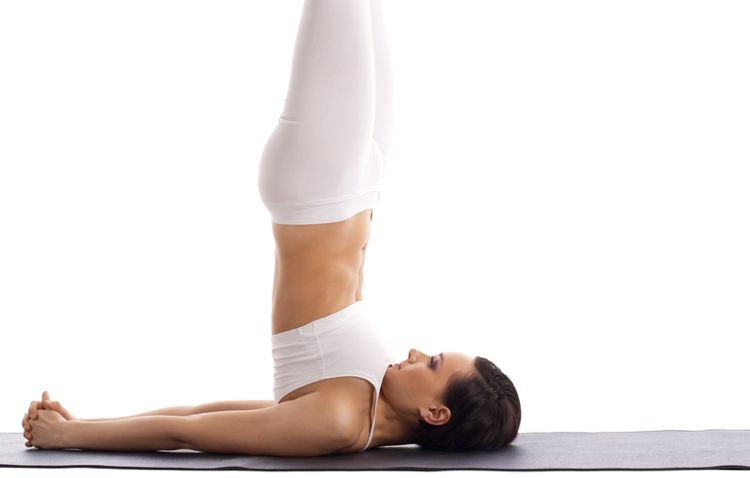“Don’t break your neck!” That’s what Sri Dharma Mittra said in an all levels class when he guided us through a Tripod Headstand (Sirsasana 2). As hyperbolic as it sounded, he did have a smart way of summing it up. The simple directive is enough to know that you best be careful going upside down.
Today, I’ll apply this great tip to headstand’s alter ego or the Queen, Shoulder Stand (Salamba Sarvangasana). Shoulder Stand (technically Supported Shoulder Stand as it translates in Sanskrit) is commonly the first inversion beginners encounter on the mat.
The Queen Of Asanas, Not Neck Stand
The benefits of Supported Shoulder Stand are plentiful, from being a calming, relaxing posture that can prepare you for stillness and meditation to offering healthy blood flow to regions in the body that typically do not receive a lot of circulation love.
Yet for beginners and veterans alike, Shoulder Stand offers quite a conundrum.
This is a pose that asks you to invert, line up knees and ankles over hips and shoulders to make one ideally vertical line, with your hands supporting your mid to low back. It’s no surprise that when you see this pose at a glance, it looks like there might be a lot of pressure on the neck—which could lead to injury and chronic pain.
But au contraire…there should not be any pressure on the neck at all. Rather, the weight should be distributed primarily between the shoulders and upper arms in the classical version of the pose.
To Prop Or Not?
Now comes the conundrum on the proper support for the pose. You’ve likely heard some schools of thought that say never, never, ever, ever practice this pose without blankets, while other schools have you going upside down on your mat "flat" or sans additional padding other than your own arms.
Neither option is wrong; each has different strengths and cautions, which I’ll talk about here.
The Blanket Option
This variation has you stacking 1-3 blankets underneath the shoulders and upper arms and placing your head off of the blanket pile onto the mat/floor. You can also fold part of your mat over the blankets to prevent your arms from slipping off.
1. Strength
Just as you might guess, the blanket(s) gives you a little padding to prevent you from grinding your neck, specifically your precious cervical spine, into the floor, which is the top fear in this pose. If you have any neck issues or pain at all, this version is likely the best and safest bet for you.
2. Caution
Depending on the thickness of the blanket(s), they can skew your natural alignment as it might pitch your body into a not so natural vertical line, which could also force your neck into further flexion than it should be. Care should be taken in placing the blankets in the right location and at the right height with respect to your anatomy. And blankets do not give you permission to tune out; you should still be working to ensure no pressure is placed on the cervical spine.
The Au-Naturel Option
This version has you coming into the pose without any additional props. And don’t let my saucy nickname fool you; you should wear clothes when you’re in public!
1. Strength
When done properly, you can experience the true alignment aims and actions for this pose, specifically the lifting action you need to take your legs overhead and up.
You can also work on safely grounding the head and shoulders on the mat which sets up a firm foundation for the pose that allows you to sturdily cultivate vertical alignment through the extended legs. And once the legs are truly vertical, this can help you lift the weight up and away from your upper body.
2. Caution
If you’re not attentive and honest in the pose, the likelihood of compressing your cervical spine is greater. When I was taught this version, my teachers offered a good rule of thumb to ensure you don’t stress the spine: Leave enough space between your neck and the mat that someone could easily slide fingers under your neck.
Remember, Ahimsa (A.k.a., No Harm)
Both of these Supported Shoulder Stand versions ask the practicing yogi to be honest and attentive. If you have any neck injuries, poses like shoulder stand need to be approached with even more caution and respect. And do leave yourself with the option of nixing it all together if and when you feel unsure of your safety.
There are thousands of yoga poses out there and even more variations within them; the benefits from one pose can most likely be offered in multiple ways without risking injury.
And as always, when in doubt, please do consult a qualified teacher for any other suggestions or modifications to support your deeper exploration.


